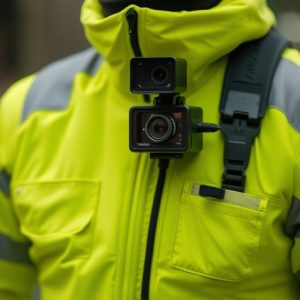Leveraging Body-Worn Hidden Cameras for Evidence Collection: Legal and Ethical Guidelines
Unveiling the Role of Body-Worn Hidden Cameras in Evidence CollectionThe Legal Implications and Ethi…….
Unveiling the Role of Body-Worn Hidden Cameras in Evidence Collection
The Legal Implications and Ethical Considerations of Using Body-Worn Hidden Cameras for Evidence
The deployment of body-worn hidden cameras has become increasingly prevalent in various sectors, including law enforcement, private security, and personal safety applications. These devices serve as a critical tool for evidence collection, offering a first-person perspective that can provide clear documentation of events. However, the legal implications of their use are multifaceted and complex. Legislation governing surveillance and privacy varies widely by jurisdiction, necessitating careful adherence to local laws and regulations. Users must ensure they have explicit consent from individuals being recorded, or the recordings may be subject to legal challenge and potentially inadmissible as evidence. Furthermore, ethical considerations are paramount; the use of such technology raises questions about individual privacy rights and the potential for misuse. It is imperative that users of body-worn hidden cameras understand their responsibilities and operate within the bounds of both legality and ethics to maintain the integrity of the evidence captured and to safeguard public trust. In handling sensitive data obtained through these devices, considerations must extend to data storage, retention, and sharing policies, which are governed by strict privacy laws and standards designed to protect individuals’ personal information. As such, organizations and individuals alike must navigate these legal and ethical waters with diligence and a commitment to transparency and accountability.
Best Practices and Techniques for Effective Use of Body-Worn Hidden Cameras in Various Settings
When deploying body-worn hidden cameras for evidence collection, it is imperative to adhere to a set of best practices and techniques that uphold the integrity of the footage captured. Firstly, the placement and visibility of the camera should be carefully considered; it must be inconspicuous enough to not alert subjects to their being recorded, yet securely positioned to avoid accidental obstruction or tampering. Operators should undergo thorough training on how to handle and operate these devices, ensuring they are familiar with their capabilities, limitations, and any potential legal implications related to surveillance.
In various settings, from law enforcement operations to personal security, the quality of footage is paramount. High-definition recording capabilities are crucial for capturing clear visuals that can be used as evidence in investigations or legal proceedings. Additionally, the storage and retrieval of data should comply with privacy laws and regulations, ensuring that recordings are stored securely and access to them is controlled and documented. Audio synchronization with video is another key factor; discrepancies between sound and image can compromise the credibility of evidence. Therefore, regular maintenance checks and firmware updates are necessary to maintain optimal functionality and data integrity.


